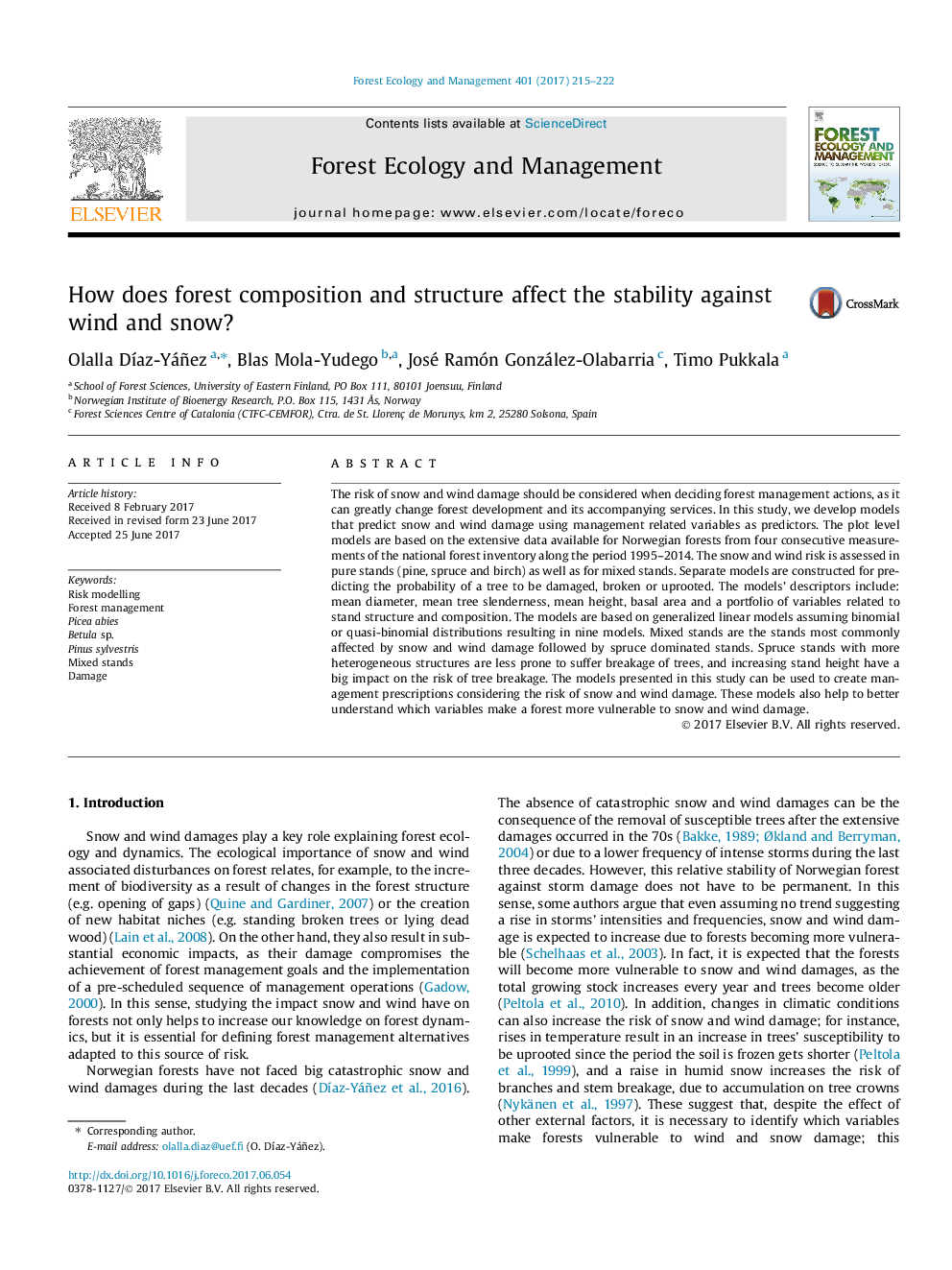| Article ID | Journal | Published Year | Pages | File Type |
|---|---|---|---|---|
| 4759315 | Forest Ecology and Management | 2017 | 8 Pages |
Abstract
The risk of snow and wind damage should be considered when deciding forest management actions, as it can greatly change forest development and its accompanying services. In this study, we develop models that predict snow and wind damage using management related variables as predictors. The plot level models are based on the extensive data available for Norwegian forests from four consecutive measurements of the national forest inventory along the period 1995-2014. The snow and wind risk is assessed in pure stands (pine, spruce and birch) as well as for mixed stands. Separate models are constructed for predicting the probability of a tree to be damaged, broken or uprooted. The models' descriptors include: mean diameter, mean tree slenderness, mean height, basal area and a portfolio of variables related to stand structure and composition. The models are based on generalized linear models assuming binomial or quasi-binomial distributions resulting in nine models. Mixed stands are the stands most commonly affected by snow and wind damage followed by spruce dominated stands. Spruce stands with more heterogeneous structures are less prone to suffer breakage of trees, and increasing stand height have a big impact on the risk of tree breakage. The models presented in this study can be used to create management prescriptions considering the risk of snow and wind damage. These models also help to better understand which variables make a forest more vulnerable to snow and wind damage.
Related Topics
Life Sciences
Agricultural and Biological Sciences
Ecology, Evolution, Behavior and Systematics
Authors
Olalla DÃaz-Yáñez, Blas Mola-Yudego, José Ramón González-Olabarria, Timo Pukkala,
